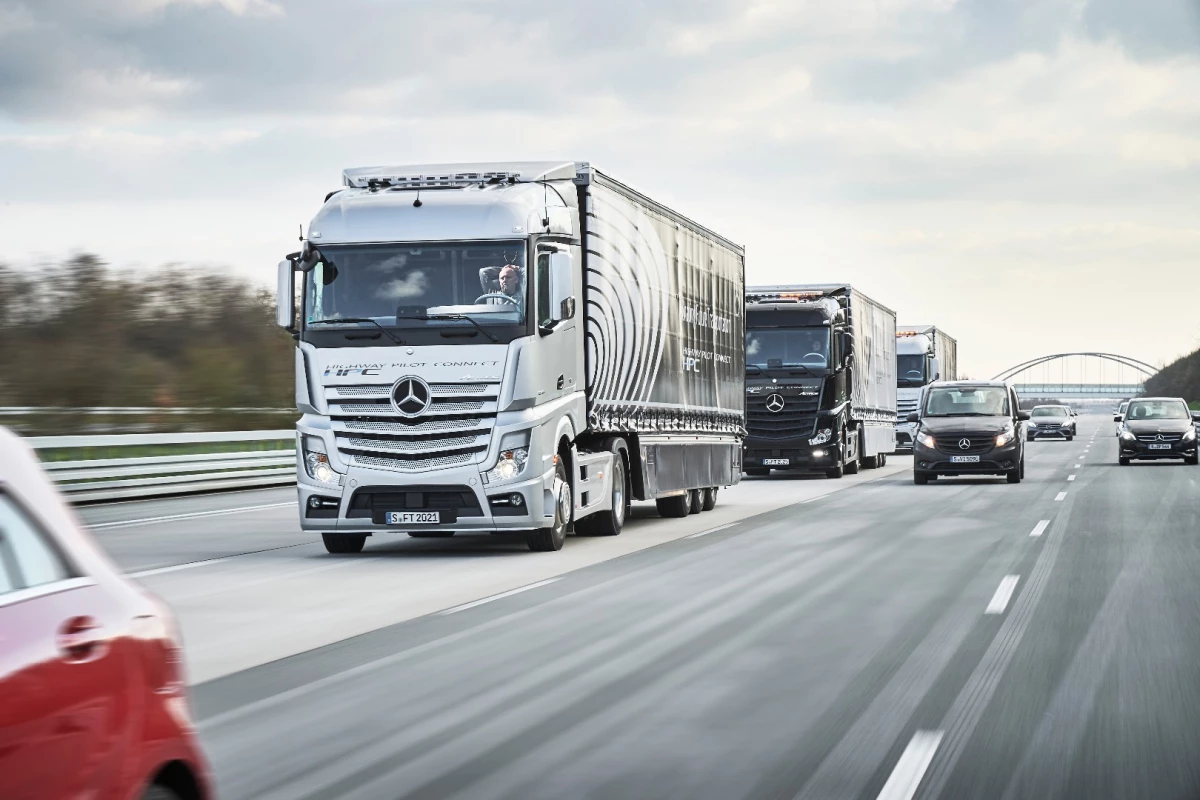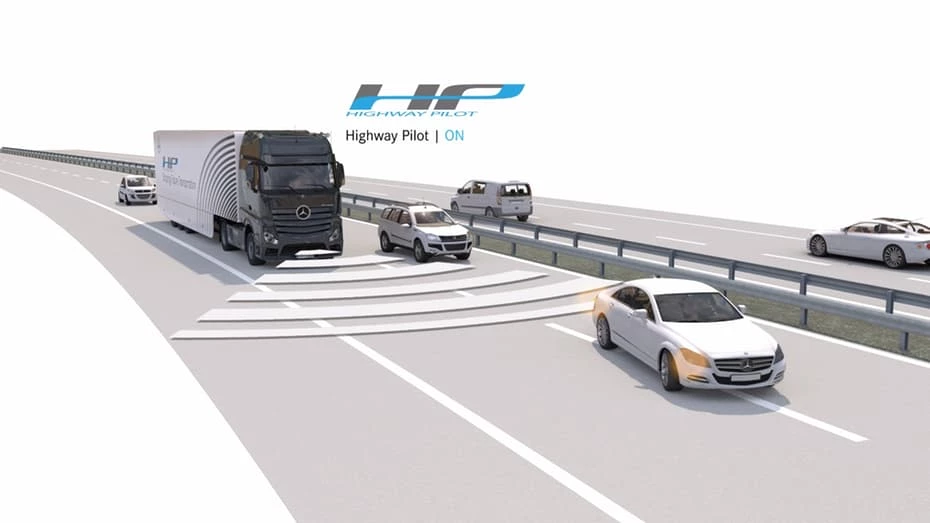Daimler has let three of its autonomous trucks loose on public roads, setting them the task of driving from Stuttgart to Rotterdam as a fully connected platoon. As well as demonstrating the scope of Daimler's own autonomous tech, the road trip is a part of the European Truck Platooning Challenge that aims to hasten the appearance of automated platoons on Europe's roads.
Introduced by the Netherlands during its presidency of the European Union, the European Truck Platooning Challenge aims to facilitate the progression of autonomous truck platooning due to its potential to reduce congestion, cut down on accidents caused by human error and make significant cuts to the amount of CO2 emitted by trucks on the road.
Taking part in this Challenge, the trucks undertaking the Germany to Netherlands road trip are all linked via Wi-Fi and rely on Daimler's Connected Highway Pilot system. Unlike regular trucks, which need to leave a 50-meter (164-ft) gap, autonomously controlled truck platoons can sit just 15 m (49 ft) apart. That means a convoy of autonomous trucks takes up just 80 m (262 ft) of highway space, as opposed to 150 m (492 ft) for a normal convoy of trucks under human control.
They can follow so closely together thanks to the Connected Pilot system, which lets the other trucks in formation know about sudden braking in just 0.1 seconds – or 1.3 seconds faster than the average human can react to a set of brake lights. However, there are drivers aboard the platoon who bear responsibility for the control of all assistance systems on board the vehicles.

Daimler is also quick to point out the fuel-saving potential of truck platoons. Because the trucks are traveling so close together they can take full advantage of the draft coming off the leaders, which can lead to a 10 percent improvement in fuel economy figures and cut the amount of CO2 emitted on a journey. That might sound like a small saving in isolation, but if Europe's entire fleet were to achieve similar cuts, the effects would be huge.
"We consider platooning as meaningful part of the integrated approach in which all stakeholders in road transport contribute to reduce fuel consumption and CO2", said Daimler's Dr. Wolfgang Bernhard. "Driving in a convoy is one of numerous examples to raise the performance of goods transport extensively with connected trucks."
The convoy departed Stuttgart on Monday and is expected to arrive in Rotterdam on April 6.
A video explaining platooning can be viewed below.
Source: Daimler
Update (Apr. 7, 2016): Daimler's trucks arrived in Rotterdam on April as planned, pulling into the local shipping port alongside alongside entries from Man, Iveco, Volvo, Scania and DAF.






